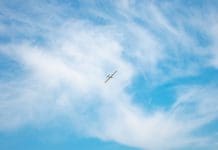This post is also available in:
 עברית (Hebrew)
עברית (Hebrew)
Concerns over the accuracy of conventional aircraft braking condition information in airports and the identification of the need for aircraft-based surface measurement and communication have led to the development of a new technology.
A new runway contamination reporting system that uses the aircraft as a condition sensor during landing roll-out has been unveiled. The system gathers performance data from aircraft to relay accurate, almost real-time data about runway conditions.
The RunwaySense technology developed by Airbus’s specialist flight-operations division, Navblue, already covers more than 880 aircraft from over 10 carriers.
The new system is based on braking action computation function software, released by Navblue on Airbus A320-family jets last year. As the aircraft lands the software generates a message about the condition of the runway surface, compared with the US FAA’s runway condition assessment matrix for take-off and landing performance.
The data will become accessible for integration with users’ tools through dedicated Navblue channels.
By transforming the aircraft into a sensor the technology is maximizing the airports’ knowledge of their runway performance and therefore increasing safety for aircraft and airports, the company claims. The available data will increase as the customer base expands.
Navblue says the data can be used to improve the timing of airport runway-sweeping operations or increase de-icing efficiency, while airlines can enhance monitoring of their operations through their own or other carriers’ information.
According to flightglobal.com, the introduction of the technology comes ahead of the deadline for ICAO (International Civil Aviation Organization) global reporting format for runway conditions, which had been set for 5 November this year but – owing to the coronavirus crisis – has been pushed back to 4 November 2021.
ICAO has spent more than a decade exploring the complex nature of runway surface friction and developing a harmonized methodology for assessment, in order to produce a standardized and simple reporting format to improve safety and situational awareness.


























